
All categories
Featured selections
Trade Assurance
Buyer Central
Help Center
Get the app
Become a supplier

(2622 products available)
















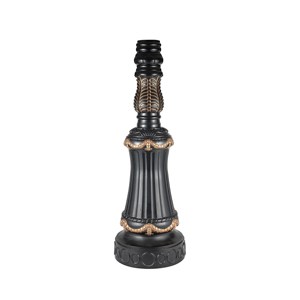


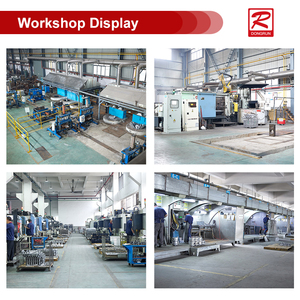


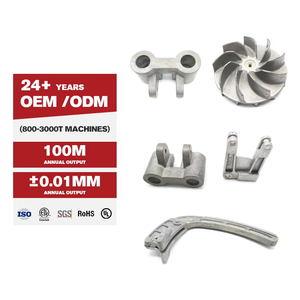

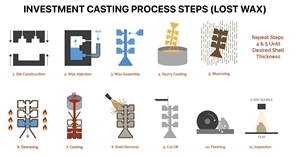



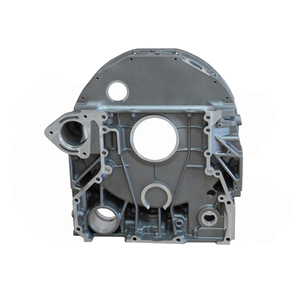





Sand casting aluminum prototype utilizes diverse materials. They include:
Aluminum Alloys
Generally, aluminum prototypes are renowned for being lightweight and highly malleable. Also, they come with stellar corrosion retardance. In addition, they come with a myriad of properties which makes them fit for heterogeneity of applications. Normally, aluminum alloy 6061 comes with magnesium and silicon, which avails excellent weldability, strength, and post-machining properties. Also, alloy 356.0 is widely used for sand casting due to its combination of strength and fluidity. Normally, these properties enable the alloy to fill molds intricately and produce complex shapes seamlessly.
Sand
Conventionally, the primary material utilized in sand casting is silica sand. Normally, its grain size and texture are vital in determining the quality of the cast. In addition, silica sand offers a balance between permeability and cohesiveness. This ensures that molds hold their shape seamlessly during metal pouring. Also, adding clay or other binders assists in grain aggregation. This acts as a mainstay in the creation of a stable mold structure.
Binders
Habitually, to enhance mold strength, variegated binders are employed in sand casting. Usually, these binders are selected based on the casting process and the desired characteristics of the final product. Typically, phenolic urethanes are popular for their ability to produce precise, high-quality casts. More often than not, these casts are integral for intricate aluminum prototype components. Also, cornstarch is a natural alternative that creates environmentally friendly molds in sand casting.
Coating Materials
Normally, coating materials are indispensable in minimizing defects on the aluminum prototype surface. In addition, these coatings aid in preventing sand adhesion to the metal. Also, they create a thin barrier that dissipates heat evenly. Though variegated options exist, graphite and molasses are commonly used. Usually, they are fit for their ability to improve surface quality and prolong mold life.
Water
Typically, water plays a critical role in sand casting. Conventionally, it aids in binding sand particles together. Also, it helps achieve the right consistency for mold formation. Furthermore, the water content is vital in maintaining mold stability. Moreover, it ensures accurate casting. However, the excessive addition of water may lead to defects during the pouring and solidification processes.
Aluminum sand cast has heterogeneous uses. They include:
Automotive Industry
Sand-casting aluminum prototypes are extensively used in the automotive sector. This is because they allow for the swift development of complex components with intricate designs. Usually, this process is optimal for producing parts such as engine brackets, transmission housings, and suspension components. Moreover, it offers the adaptability needed to manufacture part prototypes that can be fine-tuned before moving to mass production.
Aerospace Applications
Typically, precision and weight are vital in aerospace engineering. Usually, sand casting prototypes enable the production of lightweight structural components. These components function effectively as test fittings or parts in the testing of systems for structural integrity and performance. Also, the flexibility of casting methods to create geometrically complex designs aids in the distinctiveness of meeting aerospace design requirements.
Machinery and Equipment
Typically, in heavy machinery manufacturing, aluminum prototypes are indispensable for testing and validation. Moreover, sand casting offers the ability to create durable parts such as housings, brackets, and gears. Usually, these components replicate the final product. Also, this process enables manufacturers to identify design flaws early, thus improving efficiency during the eventual production phase.
Consumer Products
Consumer goods manufacturers leverage sand-casting aluminum prototypes in product development. Also, they validate design concepts for products such as bikes, cookware, and electronic enclosures. Usually, sand casting allows designers to create ergonomic shapes and tested functionalities before finalizing materials and production methods. This minimizes time-to-market and ensures a stellar product.
Industrial Components
Commonly, sand casting is used to produce prototypes of industrial components like gear housings, pulleys, and pumps. In addition, it provides the adaptability to test various designs and materials. This is crucial when evaluating performance in exigent environments. Usually, this ability is especially valuable in sectors that demand prototypes for-testing functional equipment in real time.
Aluminum sandcasting comes with a myriad of customization options. They include:
Alloy Selection
Usually, one of the primary customization options for aluminum prototypes in sand casting is the selection of aluminum alloys. Normally, each alloy comes with distinct properties and fit multiple applications. Ideally, this makes them adjustable as per the requirements. For instance, alloy 356.0 is prominent for its high strength and stellar corrosion retardance. Also, it’s suited for heavy-duty applications. Typically, alloy 413.0 offers enhanced fluidity and is favorable for casting intricate shapes.
Surface Finish
Usually, sand casting allows customization of surface finishes for aluminum prototypes. This enables designs to meet aesthetic and functional demands. Usually, the surface finish impacts the prototype’s appearance and significantly affects its performance attributes. Such attributes include wear resistance and the fitting of mating parts. More often than not, options range from rough to smooth finishes. This is depending on the purpose and requirements of the user.
Mold Design
In most cases, aluminum sand casting prototypes come with adjustable molds. Additionally, mold design plays a crucial role in determining the accuracy and intricacy of the cast. Ideally, users have the flexibility to define mold cavities. Also, they control the prototype’s shape, dimensions, and surface texture. These adjustments enable the creation of prototypes that align precisely with design schematics. They are particularly vital in product development, where fine-tuning is indispensable.
Tolerances and Specifications
Usually, aluminum prototypes’ tolerances and specifications are customizable for sand casting. Also, this factor ensures that the cast parts meet precise dimensional needs. In addition, users usually have the flexibility to define tolerances on width, length, and height. Usually, this comes with a direct impact on the prototype’s fit and functionality. Therefore, close collaboration with foundries allows for the adjustment of prototypes.
Finishing Treatments
Also, beyond surface finishing, diverse finishing treatments are applicable to sand-cast aluminum prototypes. These treatments enhance the durability of the prototype and are integral to its corrosion retardance and aesthetic appeal. Commonly, anodizing, powder coating, and electroplating offer protective barriers. Also, they improve the appearance and allow for the customization of color and surface texture, aligning with brand or product requirements.
Selecting the ideal aluminum sandcast prototype necessitates careful consideration. Here are some key factors to ponder:
Sand Casting Materials
Consider the material options available for the sand casting process. Aluminum alloys are fit to offer distinct benefits such as enhanced strength and corrosion resistance. Moreover, they cater to multiple applications. The material choice should align with the prototype’s requirements and functionality.
Sand Casting Process
Usually, there’s a need to understand the sand casting process as it affects the prototype's intricacy and precision. Though it may be slower than other methods, it’s ideal for producing prototypes with complex designs. This caters to the diverse needs of various applications.
Mold Selection
More often than not, the mold used plays a critical role in determining the final prototype’s quality. A decision needs to be made concerning the mold material and design. Considering them significantly impact the surface finish and precision. Conventionally, these factors affect the performance and appearance of the cast.
Customization Requirements
Categorically, one’s functional needs will largely determine the choice of prototype. Customarily, they depend on adjustments like surface finishes, dimensions, and tolerances. They ensure that the final product aligns with the needs and specifications of its users.
Supplier Expertise
Usually, the capability and experience of the supplier are a prerequisite in ensuring quality in the sand casting process. Normally, one needs to collaborate with a foundry or manufacturer. Ideally, there’s a need to evaluate their portfolio and industry expertise. This guarantees proficiency in tackling prototypes for the intended applications.
Post-Processing Options
Usually, consider the available post-processing methods. Often, they contribute to the enhancement of the prototype’s properties. Also, treatments such as machining, polishing, and coating improve durability and appearance. Additionally, they possibly enhance functionality.
Normally, sand casting is ideal for creating aluminum parts. Ideally, this process offers flexibility and efficiency. Therefore, it makes it a popular choice for producing components with intricate designs and varied shapes.
Usually, sand casting comes with a myriad of disadvantages. They include inclusions from sand grains, an irregular surface finish, and lower precision compared to permanent molds.
Aluminum sand cast has a stellar strength-to-weight ratio and corrosion resistance property. On the other hand, sand cast steel is heavy, corrosion-prone, and weaker.
Sand casting of aluminum is useful for prototyping and producing complex shapes. This is while offering flexibility and efficiency. Nonetheless, it has inclusions from sand grains, an irregular surface finish, and lower precision compared to permanent molds.